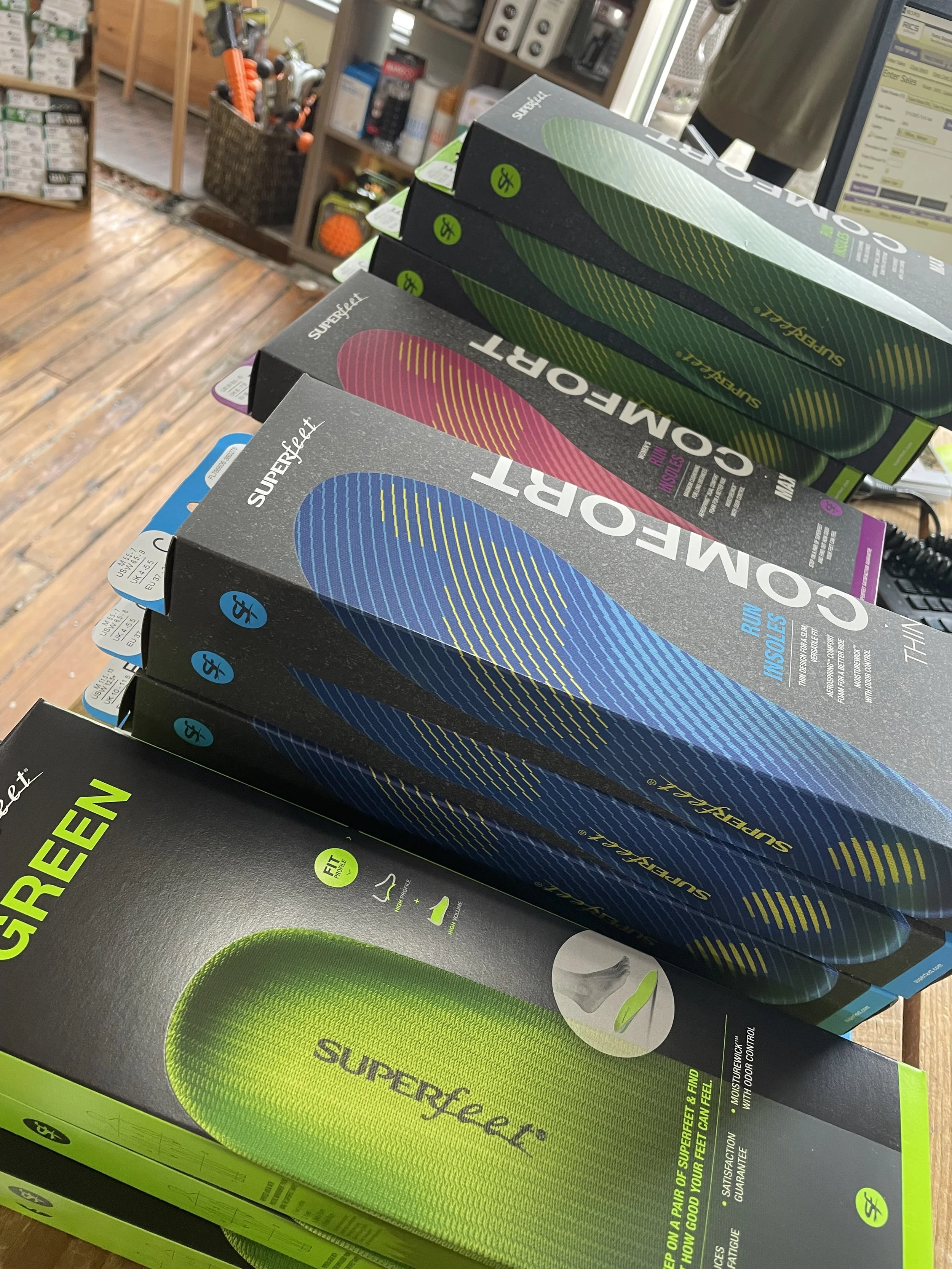3 Common Running Injuries and How to Prevent Them
Running is one of the most basic ways to stay fit, but every runner experiences different aches and injuries at some point, even elite runners. Don’t let that discourage you, though. The good news is that most running injuries are preventable if you know what to look for. To help you stay aware, here’s a breakdown of 3 common running injuries and what you can do to avoid them.
Arch supports can help keep shin splints away for people with low or high arches.
Shin splints —
Symptoms of Shin Splints are tenderness, soreness, or pain on the inner side of your shinbone, or the front of the leg below the knee cap. You might even have inflammation and swelling. At first, you might think it’s just pain from not running in a while, but the pain can be ongoing with continuous exercise. The risks of Shin Splints are higher for individuals who participate in running, increase the intensity of their workout, or have flat feet/high arches. Prevention for Shin Splints consists of a few different methods.
Don’t do too much too soon. High-intensity workouts done for too long and too hard can put your body at risk. Shin splints are usually an over-use injury; doing too much too soon puts you at risk. This is something that new runners should be especially aware of as they start adding miles and time on their feet.
Choose the correct running shoes. Use a shoe that is best for your foot, whether that is a stability or neutral shoe. This is will help your whole body stay in better alignment. If you’re a runner, make sure you’re replacing your shoes every 350-500 miles to ensure that you are getting the appropriate support and cushioning from your shoes. Running on “dead” shoes puts more strain on your legs.
Think about incorporating arch supports. Arch supports might help prevent Shin Splints for runners who have a flat foot or a high arch. Think of this as an extra support for your foot to fall onto.
Achilles tendonitis —
Symptoms of Achilles Tendonitis include pain at the base of the calf where the achilles connects to the calf muscle. This can start as a mild ache after participating in sporting activities or running. Over time, the pain will be there even when you’re resting. Achilles Tendonitis can make it hard to use the affected foot. Risk factors include calf weakness, age, training choices, medical conditions, and physical problems. Prevention measures for Achilles Tendonitis consist of:
Increase your activity level slowly. If you're starting a new exercise, start slowly. Our bodies need time to adapt to the stress and strain of new exercises. Like with Shin Splints, going too fast too soon is a recipe for injury.
Be strategic about rest and recovery. Whether you’re starting something new or training, your body needs rest. This can mean incorporating ice and foam rolling into your “rest routine.” Rest and recovery is a part of health, so don’t skip it, enjoy it!
Stretch and strengthen daily. Take time out of your day before and after workouts to stretch your calf muscles and Achilles. Just be sure that your body is warmed up. Stretching with cold muscles puts you at further risk of injury. You should also work on strengthening your calf and achilles. This can be done in a few minutes a day, even while sitting at your desk or on your couch. Try exercises like seated calf raises, heel raises and heel drops, toe walks, balancing on one leg, and reverse lunges. Something else that is super easy is simply walking around your house barefoot (no shoes, socks are fine). Walking barefoot uses more muscles than when walking supported in a shoe.
Plantar fasciitis —
Plantar fasciitis is a stabbing pain in the bottom of your foot around the heel area. It usually occurs right after waking up. Plantar can be triggered by standing for long periods of time or going from a sitting to a standing position. When you avoid the pain in walking or running, it can lead to knee, back, and hip pain. The risks of plantar fasciitis are foot weakness, certain exercises, your age (40-60), foot mechanics, and how much you stand per day. Some precautions to take are:
Stretch and strengthen your feet. This is a repetitive step, but is often overlooked by athletes. Much like with Achilles Tendonitis, strengthening muscles is the prevention for Plantar Fasciitis. Try things like seated or standing towel scrunches, “writing” the alphabet in the air with your foot, heel raises, standing calf stretches, and towel stretches. Walking barefoot also helps keep the muscles in your feet strong. Just remember, if you are already dealing with plantar fasciitis walking around barefoot will only aggravate it more.
Roll/massage foot. Use a massage ball or frozen water bottle to roll out your heel and get more blood flow to the area; this can also reduce inflammation. Bonus, it feels really good!
Wear compression sleeves. You can wear them at night when you are asleep, or throughout the day. There are many different types of sleeves that you can choose from.
There are many ways to prevent aches and injuries in your fitness journey. By gradually increasing activity levels, resting when needed, strengthening and stretching regularly, and using the right gear, you can stay moving for years to come!

